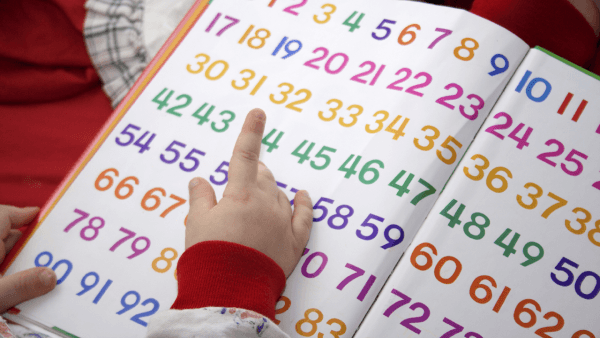Bedtime problems boost kids’ math performance

“Mommy? Daddy? Read me a word problem,” is probably not a request that many parents hear. Yet if a school child’s parents replace a bedtime story with a math discussion even one night a week, the child’s math skills may improve markedly compared with peers who listen to non-mathematical stories, a new study shows. The effect is sizable: Over the course of one 9-month school year, students who do bedtime math gain on average the equivalent of a 3-month advantage over their peers, researchers report online today in Science. The approach even works if the parents have math anxiety and generally shy away from discussing math with their children.
Educational experts generally applaud the new work, though they note it will take more investigation to understand why the strategy works. “I think it’s a fantastic study,” says James Stigler, an educational psychologist at the University of California, Los Angeles, who was not involved in the work. “But it is just the beginning.” Andee Rubin, a mathematician and computer scientist at TERC, a nonprofit educational researcher and development company in Cambridge, Massachusetts, agrees. “I’m interested in teasing it apart and seeing what makes this effective.”
Most parents understand that to help their children develop academically they should read to them, says Sian Beilock, a cognitive psychologist at the University of Chicago in Illinois and an author of the new study. But parents often assume that the school will take care of math instruction, she notes. “Our hope is that this study helps change the notion that math is the purview of the school and shows that talking about math at home is helpful,” Beilock says.
To evaluate the effects of a little bedtime math, Beilock, psychologist Susan Levine, and colleagues at the University of Chicago recruited 587 first-graders from 22 schools, public and private, richer and poorer, in the Chicago metropolitan area. The parents of each child were given a tablet computer with which to read to the child at bedtime. Four hundred and twenty families were told to use it to work through word problems related to counting, shapes, arithmetic, fractions, and probability using a freely available and independently created app called Bedtime Math. Another 167 families were instructed to use a reading app. With a standardized test, the researchers assessed all the subjects’ mathematics performance at the beginning and end of the school year.
Not surprisingly, use of the reading app made little difference to the children’s math performance. In contrast, doing math at bedtime had a significant effect: Children who used the app two or more times per week outpaced peers whose family rarely used it. “It’s like they’ve had 3 months more of math instruction,” Beilock says. “In the real world that’s a pretty big effect.”
Perhaps most important, use of the app brought students whose parents said they were anxious about math up to par with those whose parents were at ease with the subject. Among children whose family rarely used the math app, those with math-phobic parents made only half as much progress as the children of parents comfortable with math. But doing bedtime math even once a week eliminated the performance gap.
Stigler says the study is particularly impressive for its size and for being done outside a laboratory setting. “You don’t have to guess whether [the technique] will work in everyday life because the study was done in everyday life,” he says. However, Janet Bowers, a math education researcher at San Diego State University in California, notes that 70% of the subjects came from middle- and upper-middle class families and questions whether the result can be generalized. “You’re not going to bring it to a low-income school,” she predicts, “because there just aren’t parents who sit there and read.”
Why the technique was so effective remains to be determined, Rubin says. “What makes this different from helping your kid with their homework?” she asks. “Is it because it’s on an iPad? Is it because it’s in place of a story? Why did the people who used it use it?”
Beilock says she suspects that the delivery mechanics—computer or paper—don’t matter, but that the key is talking to your child about math. That should become as routine as bedtime reading, she says. Stigler says it’s an attainable goal. “I don’t think you’re going to see a huge cultural shift,” he says. “But a study like this, if it’s well publicized, can make a difference.”
Bowers notes that the study was funded by Overdeck Family Foundation, whose chair, Laura Overdeck, established the nonprofit Bedtime Math foundation, which makes the app. Beilock acknowledges that connection, but adds that the authors have no financial interest in app and the foundation had no control over the data. “It’s all in the paper,” she says, “so people can draw whatever conclusion they want.”












